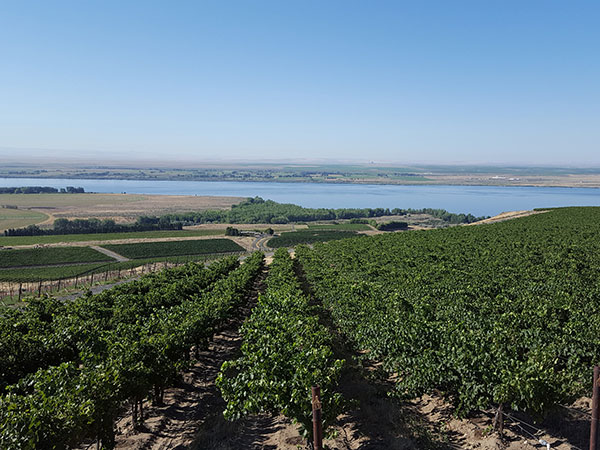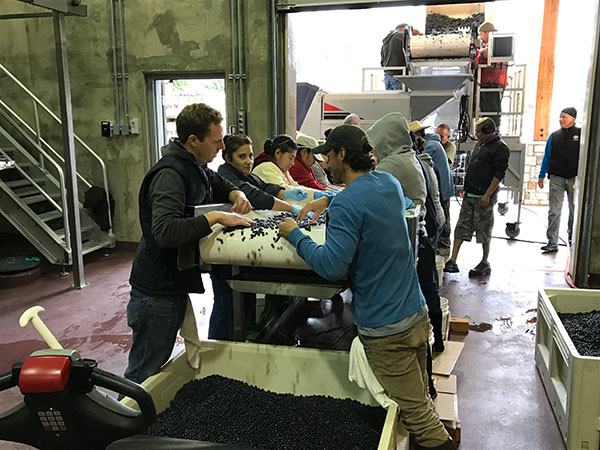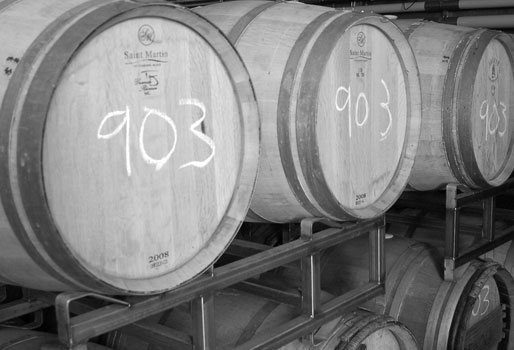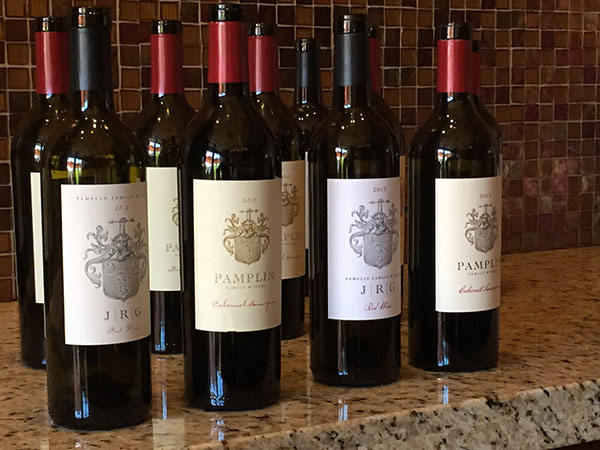
The vineyards we source from are fundamental to the success of Pamplin Family Winery. We have the pleasure of working with growers who lead the industry in quality. Most of our fruit is purchased on a per acre basis which allows us to strategize on winemaking decisions for the upcoming harvest in June, rather than when the fruit arrives at the winery in September. Crop level adjustments, leaf removal strategies and select cluster removal at specific times are essential tasks in the process to ensure that we are addressing quality concerns in the vineyard, rather than at the winery. We aim for a collaborative relationship with our growers, sharing strategies and barrel samples, with the goal of always pushing to raise the quality level of the fruit in terms of the style and character we want for our wines.

It all starts with well-developed, small berry fruit. Once it arrives at the winery, it is cluster sorted, destemmed and then sorted again – berry by berry to remove any raisins, stems and green berries. This can be a very laborious process (around 1/2 – 1 ton per hour) depending on the condition of the fruit. After a prescribed cold soak, the fruit undergoes native fermentation and is pressed off when the structure of the wine is in proportion to the fruit intensity. The wine finishes its primary fermentation in tank and is then put to barrel where it completes spontaneous malolactic fermentation. An exhaustive number of decisions have to be made during the course of each fermentation, which ultimately determine the personality and character of the wine. We strive to use intuition, rather than a set recipe, as our guide. Each fermentation is unique and specific for the given vintage, vineyard and variety.

We use 100% French oak and average approximately 30% new wood for each vintage – slightly more for Cabernet Sauvignon and slightly less for Merlot, and minimal new wood for Malbec and Petit Verdot. This is a deliberate and methodical approach that helps define the style of the winery. We believe that overt use of oak detracts from the overall quality of a wine. We want the high-quality fruit that we source to be the highlight. The choice of cooperage, as well as the use of new barrels, single-use barrels and neutral barrels, are extremely critical decisions, trumped only by vineyard picking decisions and when to drain/press. Our barrel program is evolving. It’s a challenge to experiment with new coopers when we have such small lots (8 barrels at most, with 4 barrels on average) and use relatively low percentages of new wood each year. Every vintage reveals new choices and options that we try to capitalize on in the upcoming vintage.

(Robert Henry, Winemaker) As a winemaker, I have a paradigm I strive to achieve. I try to emulate the brushes with perfection I’ve experienced in tasting the great wines of the world. For me, they inevitably share the same characteristics regardless of style or region. These wines are not loud or obvious, they are refined and graceful. They strike a certain harmonic tone that rings from start to finish. The fruit is pure, deep and focused. The structure is full and resonates. A “tension” exists within them, no singular component dominates. The bouquet is complex, if not indescribable. I believe that Washington State has unlimited potential to produce wines of this caliber. As the vintages progress, I hope to inch closer and closer to this standard, through the continuous improvement of process, consistency and by always expanding my insight and understanding of winemaking and viticulture.
